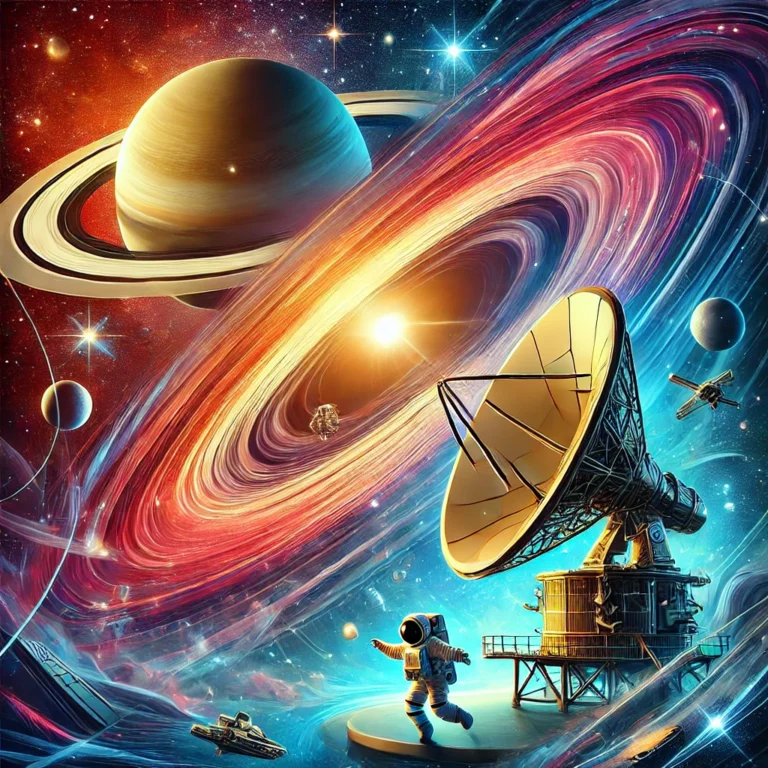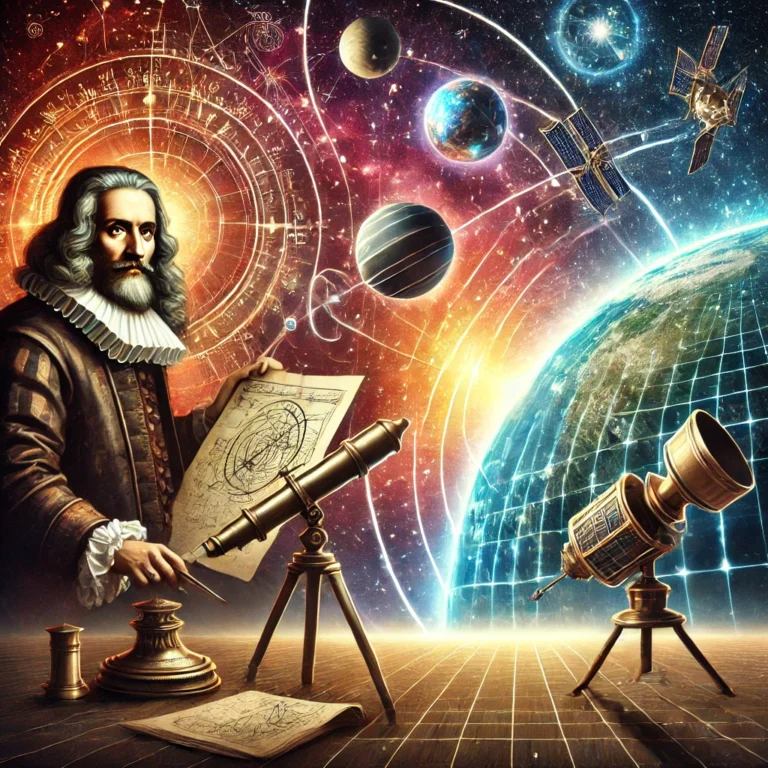INTRODUCTION
Imagine you’re at a big party, and everyone’s having a great time. But, have you ever wondered who’s really behind the music, the lights, and the overall vibe? It’s not just the DJ or the party organizers – there are many unseen forces at work. Similarly, in the universe, there are two mysterious entities that make up about 95% of its total mass-energy budget: dark matter and dark energy.
What is Dark Matter?

Dark matter is one of the most intriguing mysteries in the universe. Imagine you’re at a party, and you can feel the energy in the room, but you can’t see everyone who’s there. Dark matter is like that invisible guest list—it doesn’t emit light or energy, so we can’t see it directly. However, we know it’s there because of its gravitational effects on visible matter, like stars and galaxies.
Why Do We Think Dark Matter Exists?
When astronomers look at galaxies, they notice something strange: they rotate much faster than we would expect based on the amount of visible matter they contain. For example, if you think of a merry-go-round, the outer parts should move slower than those closer to the center. But in galaxies, the outer stars zip around at high speeds, suggesting that there’s something else—something we can’t see—providing extra gravitational pull. This unseen mass is what we call dark matter.
A Relatable Example
To understand dark matter better, let’s use a sociocultural example. In many African cultures, strong community ties and family bonds are essential. Even if you can’t see these relationships, their influence is felt in how people interact and support one another. Similarly, dark matter’s presence is felt through its gravitational influence on visible matter, even though we can’t observe it directly.
What Do We Know About Dark Matter?
1. Composition: Scientists believe that dark matter makes up about 27% of the universe’s total mass-energy content. This means that while we see stars and planets (which make up only about 5% of the universe), a significant portion remains hidden from our view.
2. Invisible Nature: Dark matter does not interact with light or any other form of electromagnetic radiation. This is why it’s called “dark.” It doesn’t reflect or emit light, making it impossible to detect with traditional telescopes.
3. Gravitational Effects: Although we can’t see dark matter, we can observe its effects on galaxies and galaxy clusters. For instance, when light from distant stars passes through areas with dark matter, it bends—this phenomenon is known as gravitational lensing. It’s like looking through a funhouse mirror; the light is distorted as it travels through regions influenced by dark matter.
Theories About Dark Matter
Scientists have proposed several theories about what dark matter might be made of:
-Weakly Interacting Massive Particles (WIMPs): One leading theory suggests that dark matter consists of WIMPs—hypothetical particles that interact very weakly with normal matter. If these particles exist, they could help explain the missing mass in our universe.
-Axions: Another possibility is that dark matter could be made up of axions—very light particles that are also theorized to interact minimally with normal matter.
– Primordial Black Holes: Some researchers speculate that dark matter might consist of black holes formed shortly after the Big Bang. These black holes would be too small to detect directly but could still exert gravitational forces.
Why Does Dark Matter Matter?
– Cosmic Structure: Dark matter plays a key role in forming galaxies and galaxy clusters. Without it, our universe would look very different; galaxies might not have formed at all.
– Understanding Gravity: Studying dark matter helps scientists learn more about gravity itself and how it shapes the universe.
– The Future of Cosmology: As we explore deeper into space and gather more data from advanced telescopes and satellites, understanding dark matter will be essential for piecing together the history and future of our universe.
Dark matter remains one of the biggest puzzles in astrophysics today. While we cannot see it directly, its influence is felt throughout the cosmos. By studying its effects on visible matter, scientists hope to unlock more secrets about our universe’s structure and origins. As technology advances and new discoveries are made, we may finally uncover what this mysterious substance truly is.
Want To Read More About:
- Top 10 Cutting-Edge Space Technologies That Is Transforming Space Exploration
- Top 10 Most Dangerous Space Missions
Unlock the wonders of the sky and beyond—shop the best telescopes, binoculars, and drones today:

What is Dark Energy?

Dark energy is one of the most mysterious and fascinating concepts in modern astrophysics. Think of it as the party’s mysterious energizer—an invisible force that fills the universe, causing it to expand at an accelerating rate. Just like blowing up a balloon, where the air molecules inside push the surface outward, dark energy pushes the fabric of space itself, making galaxies move away from each other faster over time.
The Discovery of Dark Energy:
The idea of dark energy emerged in the late 1990s when astronomers observed distant supernovae—exploding stars that can outshine entire galaxies. They expected these supernovae to be farther away than they appeared if the universe’s expansion was slowing down due to gravity. However, to their surprise, they found that the universe was not only expanding but doing so at an accelerating rate. This led scientists to propose the existence of dark energy as a driving force behind this acceleration.
How Does Dark Energy Work?
1. **Constant Density**: One of the intriguing properties of dark energy is that its density appears to remain constant throughout the universe. This means that as space expands, more dark energy is created to fill the new space. Imagine a sponge soaking up water; as it expands, it absorbs more liquid to maintain its fullness.
2. **Cosmological Constant**: Some scientists believe that dark energy might be related to a concept known as the cosmological constant (Λ), which was introduced by Albert Einstein. This constant represents a uniform energy density spread throughout space, acting like a repulsive force that counteracts gravity on cosmic scales.
3. **Vacuum Energy**: Another theory suggests that dark energy could be a form of vacuum energy—a type of energy present in empty space itself. Even in a vacuum, particles are constantly popping in and out of existence, contributing to this mysterious energy field.
A Sociocultural Example
To better understand dark energy, let’s draw a parallel with the concept of “qi” or life energy found in many Asian cultures. Qi is believed to flow through all living things, influencing their behavior and well-being. Just as you can feel the effects of qi even if you can’t see it, dark energy permeates the universe, driving its expansion and evolution without being directly observable.
The Impact of Dark Energy on the Universe:
Dark energy makes up about 70% of the universe’s total mass-energy content. Its influence is crucial for understanding how our universe will evolve over time:
– **Accelerating Expansion**: If dark energy continues to dominate, the universe will keep expanding at an accelerating pace. This means galaxies will move further apart over billions of years, leading to a scenario where structures not held together by gravity will eventually drift away from each other.
– **Fate of Cosmic Structures**: In a universe governed by dark energy, gravitationally bound structures like galaxies and galaxy clusters will remain intact while everything else appears to recede into the distance. This phenomenon is sometimes referred to as “cosmic isolation.”
Current Research and Challenges:
Despite its significant role in cosmology, scientists still have much to learn about dark energy. Recent studies have raised questions about its nature:
– **Hubble Tension**: Observations from different sources have shown discrepancies in measuring the rate of expansion of the universe—an anomaly known as Hubble tension. This inconsistency suggests that our understanding of dark energy might need refinement.
– **Evolving Models**: Some researchers propose that dark energy might not be constant but could change over time or vary across different regions of space. New observations are essential for testing these theories and improving our understanding.
Dark energy remains one of the biggest mysteries in science today. While we can’t see it directly, its effects are felt throughout the cosmos, driving the expansion of our universe and shaping its fate. As technology advances and new discoveries are made, we may uncover more about this enigmatic force and how it influences everything around us.
The Search for Answers: Unraveling Dark Matter and Dark Energy:

Scientists are working tirelessly to uncover the secrets of dark matter and dark energy, two of the most mysterious components of our universe. These entities make up about 95% of the universe’s total mass-energy content, yet we know very little about them. To explore these cosmic puzzles, researchers are employing advanced telescopes, particle colliders, and sophisticated computer simulations.
Advanced Tools in the Quest for Knowledge:
One of the exciting tools in this search is the **Large Synoptic Survey Telescope (LSST)**, which will soon be operational. This powerful telescope will allow researchers to map the distribution of dark matter and dark energy across the universe with unprecedented precision. By observing how light from distant galaxies is affected by gravity—an effect known as **gravitational lensing**—scientists can infer the presence and distribution of dark matter.
Example: Gravitational Lensing
Imagine shining a flashlight through a glass of water. The light bends as it passes through, creating a distorted image on the other side. Similarly, when light from distant galaxies travels through areas with dark matter, it bends due to the gravitational pull of that unseen mass. By studying these distortions, astronomers can create maps that reveal how much dark matter is present in various regions of space.
Recent Breakthroughs in Understanding Dark Energy:
A recent study led by researchers at University College London (UCL) has made significant strides in understanding dark energy using **artificial intelligence (AI)** techniques. By analyzing a detailed map of dark and visible matter over the last seven billion years, they doubled the precision at which key characteristics of dark energy could be inferred. This improved understanding allows scientists to rule out certain models of the universe that were previously considered plausible.
Key Findings from UCL’s Research:
– The study suggested that matter in the universe is more smoothly distributed than Einstein’s theory of general relativity would predict. This means that instead of being clumpy, matter is more evenly spread out.
– Researchers utilized **supercomputers** to run simulations based on different mathematical models of the universe. These simulations helped them extract relevant information about cosmological models from their maps.
The Importance of Ongoing Research:
Understanding dark matter and dark energy is crucial because they play a vital role in shaping our universe. Their properties influence everything from galaxy formation to cosmic expansion. As scientists continue to investigate these enigmatic forces, they hope to answer fundamental questions about how our universe works and its ultimate fate.
Future Directions:
As technology advances and new observational techniques are developed, researchers are optimistic about making further discoveries. The combination of innovative telescopes like LSST, AI analysis, and collaborative research efforts will enhance our understanding of these cosmic phenomena.
The search for answers regarding dark matter and dark energy is an exciting journey that continues to challenge our understanding of the universe. With advanced tools and collaborative efforts, scientists are making significant progress in unraveling these mysteries. As we learn more about these elusive components, we move closer to understanding the fundamental nature of our cosmos.
Conclusion:
Dark matter and dark energy are the universe’s invisible forces, shaping its evolution and structure. While we can’t see them directly, their presence is felt through their gravitational and energetic effects.
As we continue to explore the universe, we may uncover more secrets about these enigmatic entities. Who knows? We might just discover that dark matter and dark energy are the universe’s ultimate party planners.
Want To Learn More About:
- Astronomy In Everyday Life: Exploring The Practical Applications Of Stargazing.
- Space Technology: Exploring the Cosmos and Improving Life on Earth.
Unlock the wonders of the sky and beyond—shop the best telescopes, binoculars, and drones today:

Disclosure/Disclaimer:
This article contains affiliate links, supporting our educational and informative contents creation.
We appreciate supporting us to create more value and fascinating contents here on our site for educational purposes only.






One Comment